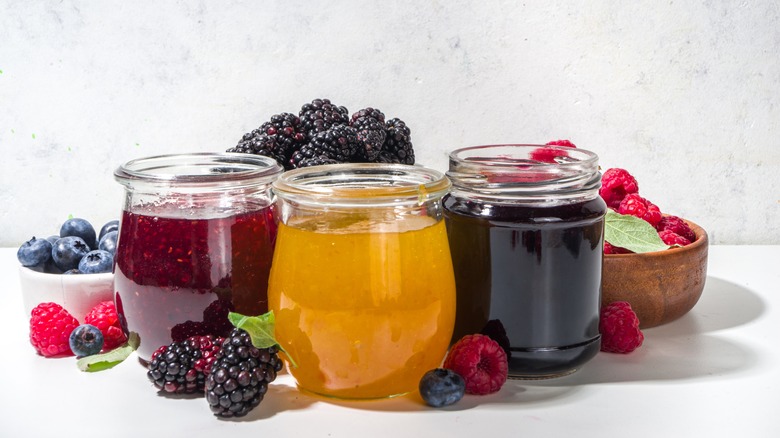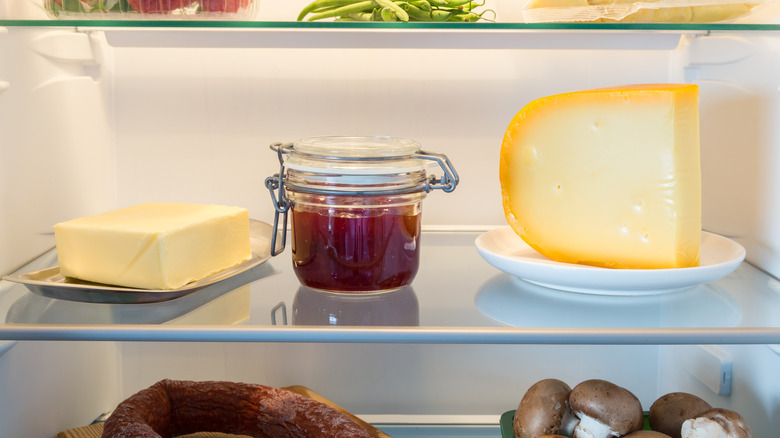When You Need To Refrigerate Jams And Jellies
Jams and jellies have been around for a long time, especially classic homemade ones. According to Freshways, the first versions of this fruity spread can be traced back to the Romans, making an appearance in the cookbook "De Re Coquinaria," which translates to "The Art of Cooking," and is the oldest known cookbook that exists, per Open Culture. Back then, this delectable spread was a lovely luxury served at the conclusion of a meal. Today, this condiment is everywhere. We use this fruity concoction on our toast, our favorite peanut butter and jelly sandwich, nestled onto a "charcuterie board" or in both cooking and baking (via Martha Stewart).
What exactly makes a jam a "jam" and a jelly a "jelly?" Clemson Cooperative Extension Home & Garden Information Center explains jellies are generally semitransparent and use fruit juice and sugar, while jams also use sugar but have a thicker texture because they use actual fruit that has either been crushed or chopped. Whether you make your own or buy a favorite brand from the grocery store, jellies and jams are a staple for many households, making knowing how to store them essential. So, when do you need to refrigerate this sweet spread, and how long do condiments last?
After you pop the lid
According to CNET, once you pop the lid off a jar of jam or jelly, it's time to put it in the refrigerator. That's right; if you open it, you need to refrigerate it. In fact, the site notes that if your jar of jelly has been sitting out at room temperature for 48 hours, you probably want to toss it. We know what you're thinking; with all that sugar jams and jellies contain acting as a preservative, why would you need to throw it out?
Nicole Richard from the University of Rhode Island's Food Safety Outreach and Research Program told Martha Stewart the risk of leaving a jam or jelly unrefrigerated after opening is the potential for mold or yeast growth. Translation, jams and jellies can go bad. Refrigerating your spreads keeps them safe for future use. As Richard said, "Storage of opened jams and jellies in the refrigerator slows the growth of spoilage microorganisms, therefore, extending the shelf life of the food."
How can you tell if your jams and jellies have gone bad? Richard explains that you first want to take a whiff. If you detect a fermented odor or visible signs of mold, it is time to throw your jar away.

